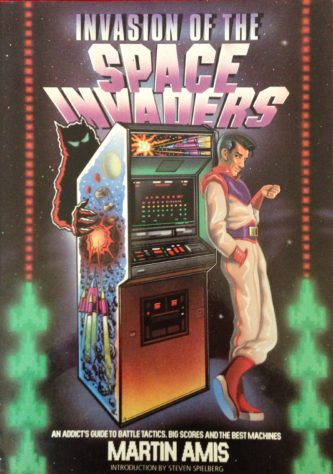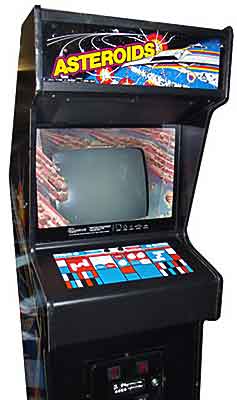 By MARTIN AMIS (Celestial Arts; 1982)
By MARTIN AMIS (Celestial Arts; 1982)
Here we have a definite literary oddity, a celebration of the video game scene of the early 1980s by the snootier-than-thou British novelist Martin Amis. This book was out of print for decades, and widely believed to remain that way until the end of time (for the record, it was reprinted in late 2018). When asked about INVASION OF THE SPACE INVADERS in interviews Amis has been said to characteristically respond with a dismissive scowl (as he apparently also does at the mention of his contributions to the MARS ATTACKS! screenplay).
The value of this book nowadays is in its spirited evocation of a long-lost era when video games, of the coin-operated type found in bars, restaurants and arcades, were all the rage. For gen-xers who remember that time, INVASION OF THE SPACE INVADERS is an irresistibly nostalgic read, and will likely serve as an enjoyable history lesson for readers too young to remember the early 1980s.
The book commences with an introduction by none other than Steven Spielberg, who admits “I have actually exceeded 500,000 at Missile Command but have not broken beyond 75,000 at the super-updated machines.” From there Amis launches into a whirlwind exploration of the “videogame fever” that was sweeping the globe, with tidbits about a 12 year old boy who held up a bank in Japan to get coins for Space Invaders and the many maladies caused by excess game-playing (“Asteroid Elbow,” “PacMan Finger,” “Centipede Disc,” etc.). The author himself admits to having an insatiable arcade addiction dating back to 1979, and that “after three years, the passion has not cooled.”
Many prominent games are profiled here, such as Space Invaders (which is apparently “owed the respect paid to the senior member of any family—even though we all admit the old man has become a bit of a bore in his declining years”), Asteroids (“When this book is done, I intend to start work on a cult bestseller entitled ZEN AND THE ART OF ASTEROIDS”), PacMan (“a silly idea but a good game”), Frogger (“in my view, Frogger is a dogger”) and Donkey Kong (“It seems that, over there on Kamikaze Street, King means Donkey, or Kong means King, or something. Anyway, the game is a poodle”), complete with detailed instructions and strategies for winning (“PacMan player, be not proud, nor too macho, and you will prosper on the dotted screen”). Amis also briefly covers the TV and computer game revolution that was just coming into vogue at the time (the Atari 2600 system in particular, providing even more nostalgia for us eighties kids), and peppers it all with philosophical observations that bring out his highbrow orientation (“There is something willful, is there not, something voulu, about putting the last coins you own into one of those squat monsters, already chock-full of your wasted cash?”).
INVASION OF THE SPACE INVADERS is attractively designed with copious photographic illustrations depicting the arcade experience of old. It’s an easy read, and also a satisfying—if excessively lightweight—one.



